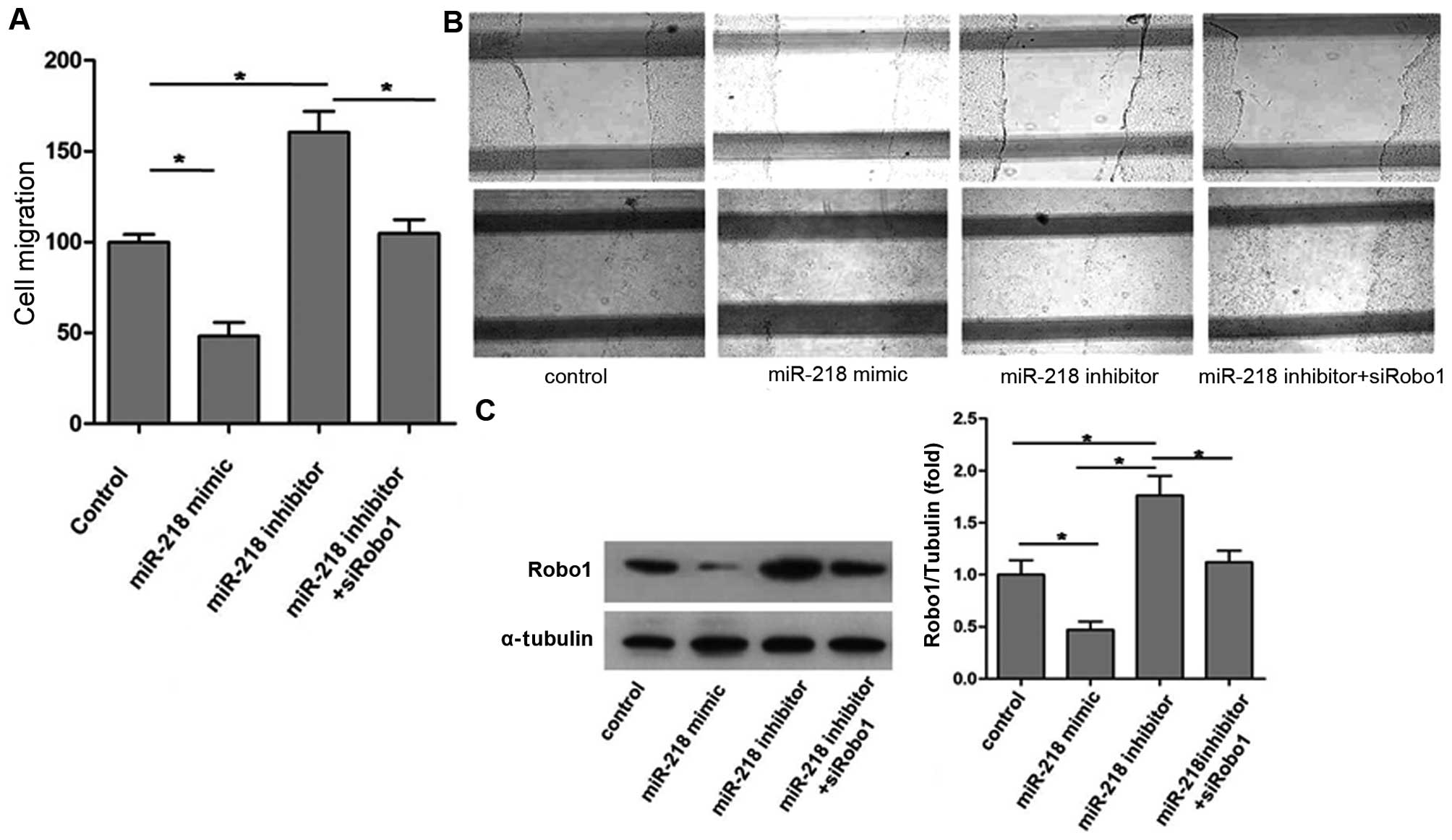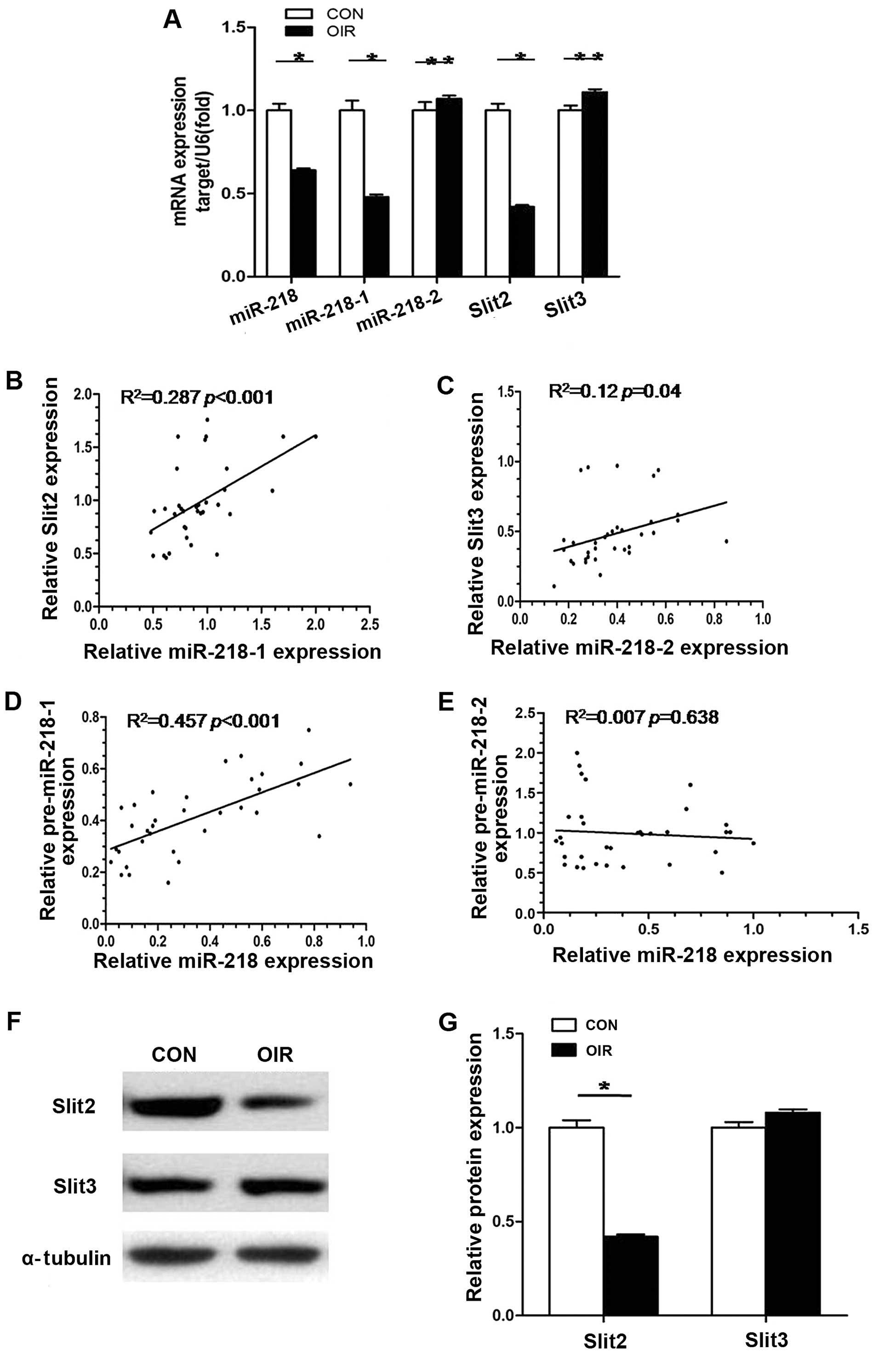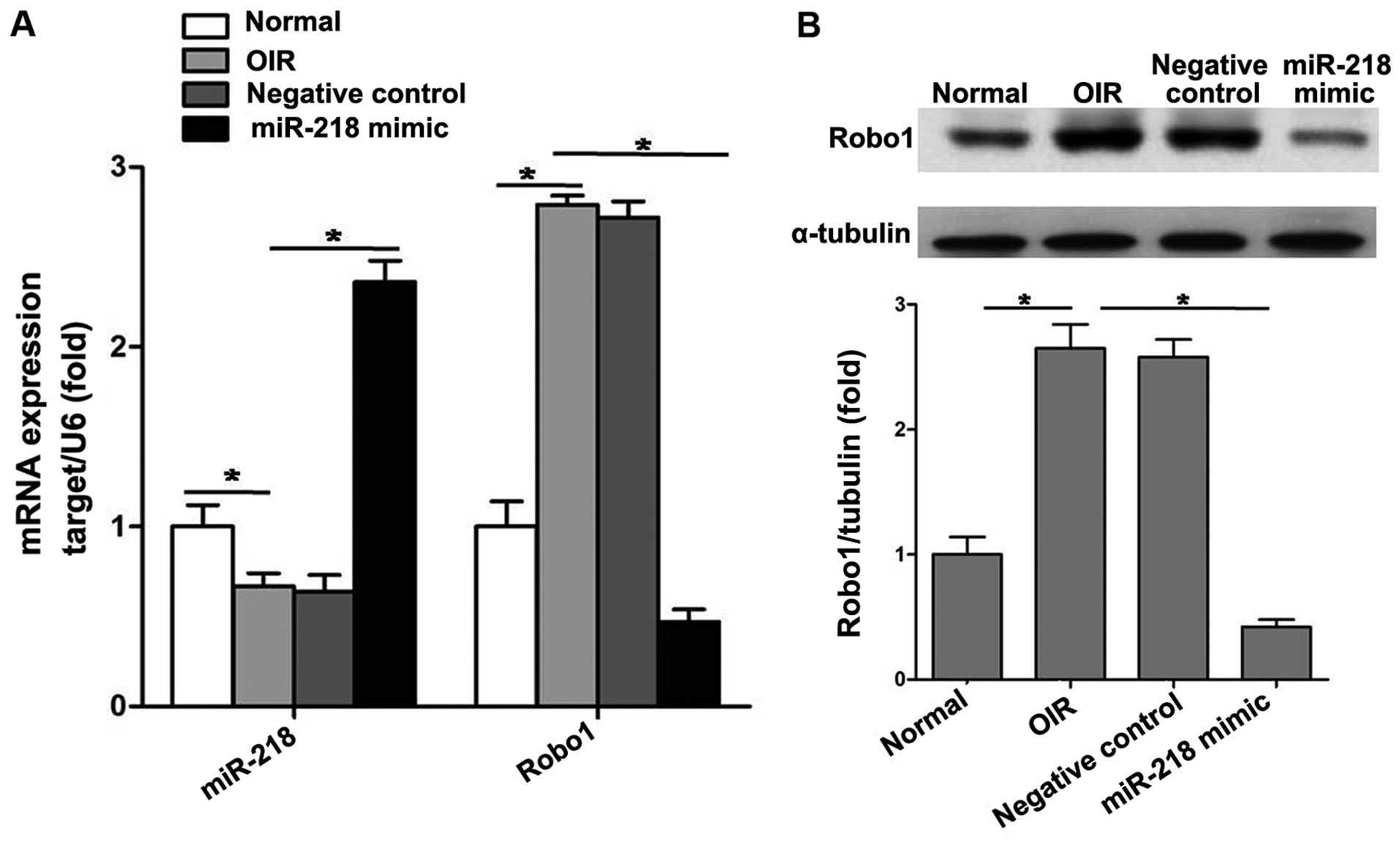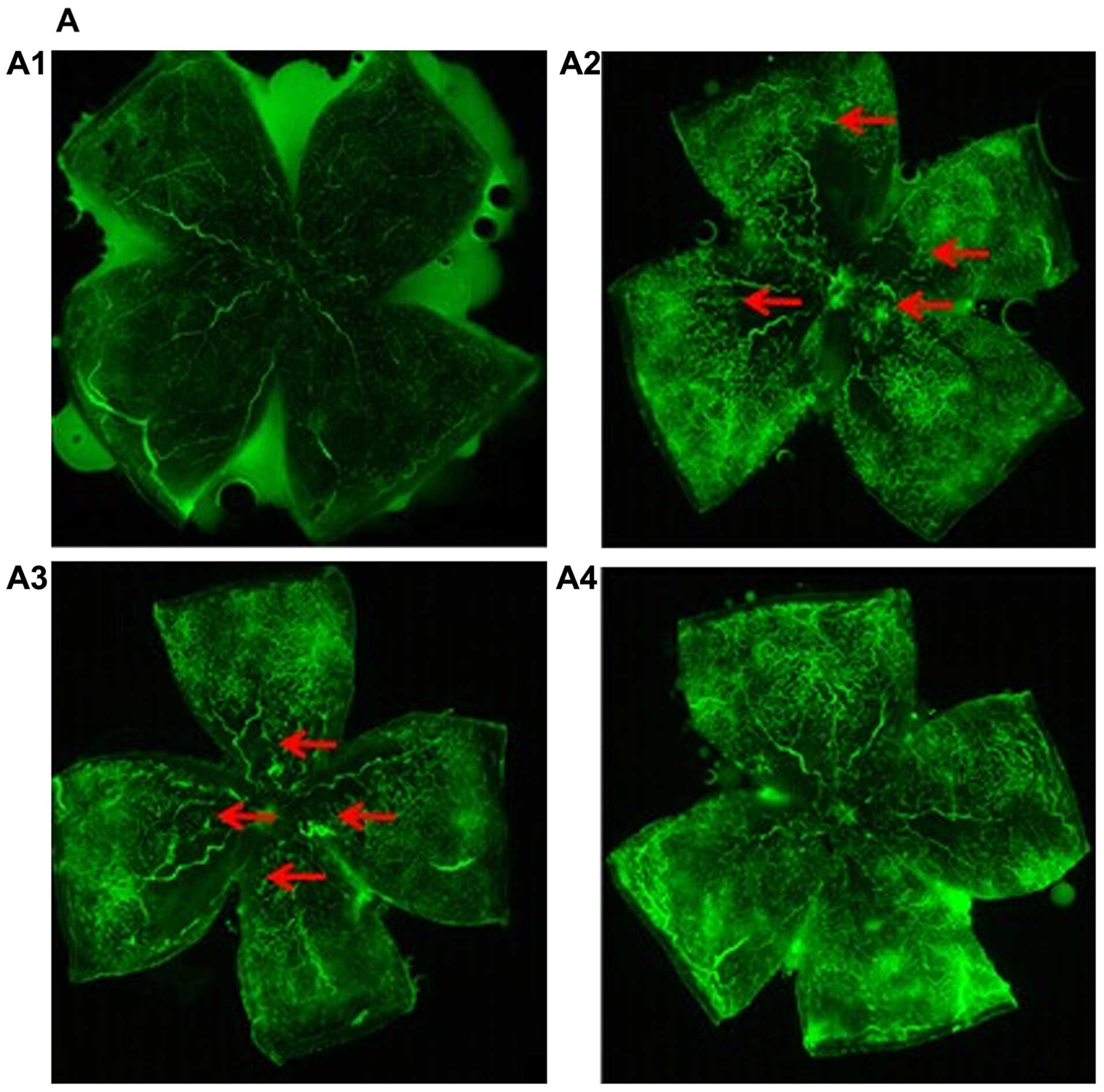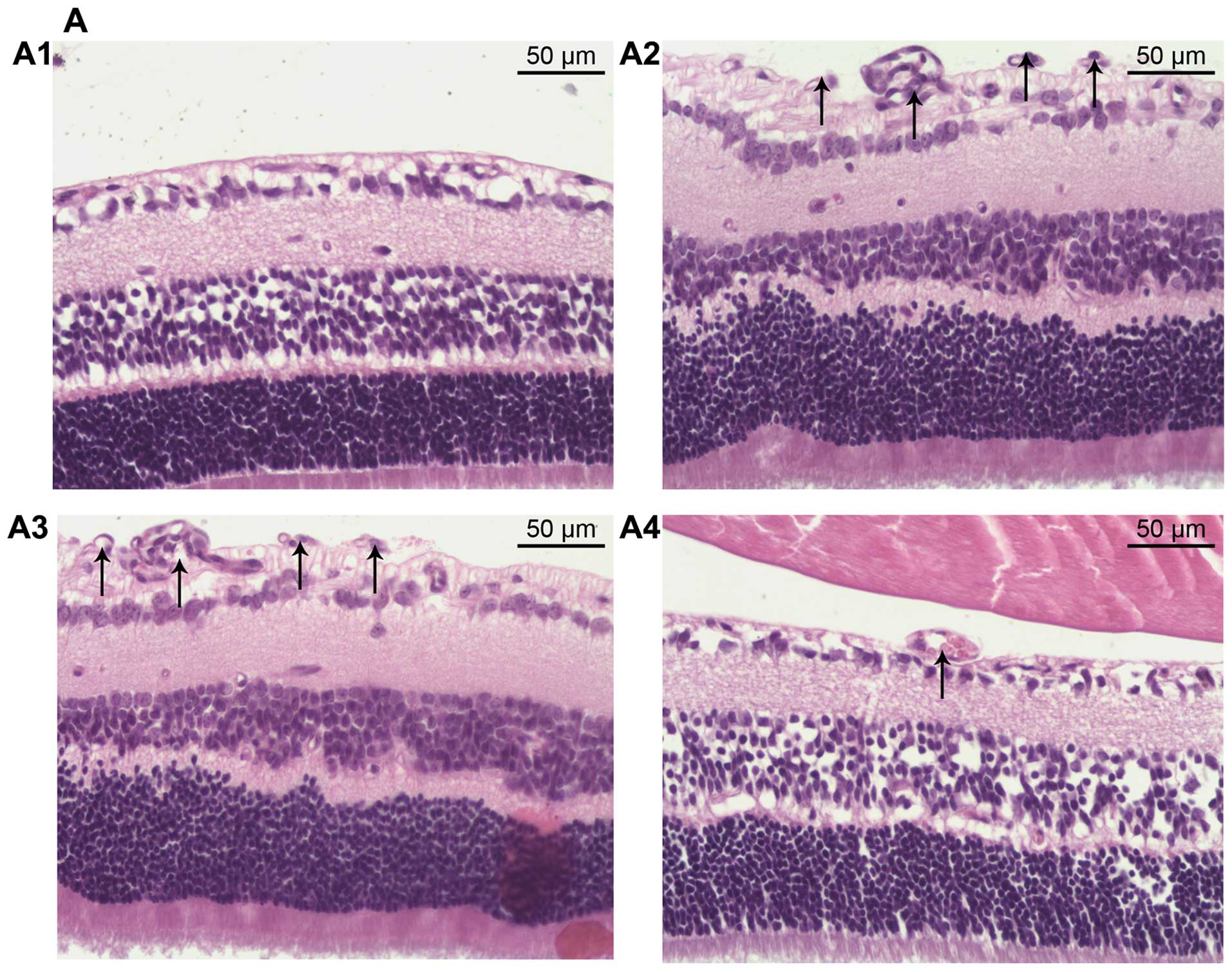|
1
|
Ishida S, Usui T, Yamashiro K, Kaji Y,
Amano S, Ogura Y, Hida T, Oguchi Y, Ambati J, Miller JW, et al:
VEGF164-mediated inflammation is required for pathological, but not
physiological, ischemia-induced retinal neovascularization. J Exp
Med. 198:483–489. 2003. View Article : Google Scholar : PubMed/NCBI
|
|
2
|
Avunduk AM, Cetinkaya K, Kapicioğlu Z and
Kaya C: The effect of posterior vitreous detachment on the
prognosis of branch retinal vein occlusion. Acta Ophthalmol Scand.
75:441–442. 1997. View Article : Google Scholar : PubMed/NCBI
|
|
3
|
Moravski CJ, Kelly DJ, Cooper ME, Gilbert
RE, Bertram JF, Shahinfar S, Skinner SL and Wilkinson-Berka JL:
Retinal neovascularization is prevented by blockade of the
renin-angio-tensin system. Hypertension. 36:1099–1104. 2000.
View Article : Google Scholar : PubMed/NCBI
|
|
4
|
Campochiaro PA: Ocular neovascularization.
J Mol Med Berl. 91:311–321. 2013. View Article : Google Scholar : PubMed/NCBI
|
|
5
|
Brose K, Bland KS, Wang KH, Arnott D,
Henzel W, Goodman CS, Tessier-Lavigne M and Kidd T: Slit proteins
bind Robo receptors and have an evolutionarily conserved role in
repulsive axon guidance. Cell. 96:795–806. 1999. View Article : Google Scholar : PubMed/NCBI
|
|
6
|
Dickson BJ: Molecular mechanisms of axon
guidance. Science. 298:1959–1964. 2002. View Article : Google Scholar : PubMed/NCBI
|
|
7
|
Liu J, Zhang L, Wang D, Shen H, Jiang M,
Mei P, Hayden PS, Sedor JR and Hu H: Congenital diaphragmatic
hernia, kidney agenesis and cardiac defects associated with
Slit3-deficiency in mice. Mech Dev. 120:1059–1070. 2003. View Article : Google Scholar : PubMed/NCBI
|
|
8
|
Cariboni A, Andrews WD, Memi F, Ypsilanti
AR, Zelina P, Chedotal A and Parnavelas JG: Slit2 and Robo3
modulate the migration of GnRH-secreting neurons. Development.
139:3326–3331. 2012. View Article : Google Scholar : PubMed/NCBI
|
|
9
|
Kryczek I, Wei S, Keller E, Liu R and Zou
W: Stroma-derived factor (SDF-1/CXCL12) and human tumor
pathogenesis. Am J Physiol Cell Physiol. 292:C987–C995. 2007.
View Article : Google Scholar
|
|
10
|
Stella MC, Trusolino L and Comoglio PM:
The Slit/Robo system suppresses hepatocyte growth factor-dependent
invasion and morphogenesis. Mol Biol Cell. 20:642–657. 2009.
View Article : Google Scholar :
|
|
11
|
Bauer K, Dowejko A, Bosserhoff AK,
Reichert TE and Bauer R: Slit-2 facilitates interaction of
P-cadherin with Robo-3 and inhibits cell migration in an oral
squamous cell carcinoma cell line. Carcinogenesis. 32:935–943.
2011. View Article : Google Scholar : PubMed/NCBI
|
|
12
|
Schubert T, Denk AE, Ruedel A, Kaufmann S,
Hustert E, Bastone P and Bosserhoff AK: Fragments of SLIT3 inhibit
cellular migration. Int J Mol Med. 30:1133–1137. 2012.PubMed/NCBI
|
|
13
|
Han X and Zhang MC: Potential
anti-angiogenic role of Slit2 in corneal neovascularization. Exp
Eye Res. 90:742–749. 2010. View Article : Google Scholar : PubMed/NCBI
|
|
14
|
Wang B, Xiao Y, Ding BB, Zhang N, Yuan X,
Gui L, Qian KX, Duan S, Chen Z, Rao Y and Geng JG: Induction of
tumor angio-genesis by Slit-Robo signaling and inhibition of cancer
growth by blocking Robo activity. Cancer Cell. 4:19–29. 2003.
View Article : Google Scholar : PubMed/NCBI
|
|
15
|
Zhou W, Yu W, Xie W, Huang L, Xu Y and Li
X: The role of SLIT-ROBO signaling in proliferative diabetic
retinopathy and retinal pigment epithelial cells. Mol Vis.
17:1526–1536. 2011.PubMed/NCBI
|
|
16
|
Kim VN, Han J and Siomi MC: Biogenesis of
small RNAs in animals. Nat Rev Mol Cell Biol. 10:126–139. 2009.
View Article : Google Scholar : PubMed/NCBI
|
|
17
|
Kim YK and Kim VN: Processing of intronic
microRNAs. EMBO J. 26:775–783. 2007. View Article : Google Scholar : PubMed/NCBI
|
|
18
|
van Rooij E, Quiat D, Johnson BA,
Sutherland LB, Qi X, Richardson JA, Kelm RJ Jr and Olson EN: A
family of microRNAs encoded by myosin genes governs myosin
expression and muscle performance. Dev Cell. 17:662–673. 2009.
View Article : Google Scholar : PubMed/NCBI
|
|
19
|
Bartel DP: MicroRNAs: genomics,
biogenesis, mechanism, and function. Cell. 116:281–297. 2004.
View Article : Google Scholar : PubMed/NCBI
|
|
20
|
Sayed D and Abdellatif M: MicroRNAs in
development and disease. Physiol Rev. 91:827–887. 2011. View Article : Google Scholar : PubMed/NCBI
|
|
21
|
Kasinski AL and Slack FJ: Epigenetics and
genetics MicroRNAs en route to the clinic: progress in validating
and targeting microRNAs for cancer therapy. Nat Rev Cancer.
11:849–864. 2011. View
Article : Google Scholar : PubMed/NCBI
|
|
22
|
Fabian MR, Sonenberg N and Filipowicz W:
Regulation of mRNA translation and stability by microRNAs. Annu Rev
Biochem. 79:351–379. 2010. View Article : Google Scholar : PubMed/NCBI
|
|
23
|
Shen J, Yang X, Xie B, Chen Y, Swaim M,
Hackett SF and Campochiaro PA: MicroRNAs regulate ocular
neovascularization. Mol Ther. 16:1208–1216. 2008. View Article : Google Scholar : PubMed/NCBI
|
|
24
|
Bai Y, Bai X, Wang Z, Zhang X, Ruan C and
Miao J: Micro- RNA-126 inhibits ischemia-induced retinal
neovascularization via regulating angiogenic growth factors. Exp
Mol Pathol. 91:471–477. 2011. View Article : Google Scholar : PubMed/NCBI
|
|
25
|
Chen N, Wang J, Hu Y, Cui B, Li W, Xu G,
Liu L and Liu S: MicroRNA-410 reduces the expression of vascular
endothelial growth factor and inhibits oxygen-induced retinal
neovascularization. PLoS One. 9:e956652014. View Article : Google Scholar : PubMed/NCBI
|
|
26
|
Small EM, Sutherland LB, Rajagopalan KN,
Wang S and Olson EN: MicroRNA-218 regulates vascular patterning by
modulation of Slit-Robo signaling. Circ Res. 107:1336–1344. 2010.
View Article : Google Scholar : PubMed/NCBI
|
|
27
|
Kong YC, Sun B, Zhao KX, Han M and Wang
YC: Small interference RNA targeting vascular endothelial growth
factor gene effectively attenuates retinal neovascularization in
mice model. Chin Med J (Engl). 126:1440–1444. 2013.
|
|
28
|
Li S, Li T, Luo Y, Yu H, Sun Y, Zhou H,
Liang X, Huang J and Tang S: Retro-orbital injection of
FITC-dextran is an effective and economical method for observing
mouse retinal vessels. Mol Vis. 17:3566–3573. 2011.
|
|
29
|
Smith LE: Pathogenesis of retinopathy of
prematurity. Acta Paediatr Suppl. 91:26–28. 2002. View Article : Google Scholar : PubMed/NCBI
|
|
30
|
Kidd T, Bland KS and Goodman CS: Slit is
the midline repellent for the robo receptor in Drosophila. Cell.
96:785–794. 1999. View Article : Google Scholar : PubMed/NCBI
|
|
31
|
Huang L, Xu Y, Yu W, Li X, Liqun C, He X
and Peiying H: Robo1: a potential role in ocular angiogenesis.
34:1019–1029. 2009.
|
|
32
|
Huang L, Yu W, Li X, Niu L, Li K and Li J:
Robo1/robo4: different expression patterns in retinal development.
Exp Eye Res. 88:583–588. 2009. View Article : Google Scholar
|
|
33
|
Rama N, Dubrac A, Mathivet T, Ní
Chárthaigh RA, Genet G, Cristofaro B, Pibouin-Fragner L, Ma L,
Eichmann A and Chédotal A: Slit2 signaling through Robo1 and Robo2
is required for retinal neovascularization. Nat Med. 21:483–491.
2015. View
Article : Google Scholar : PubMed/NCBI
|
|
34
|
Tie J, Pan Y, Zhao L, Wu K, Liu J, Sun S,
Guo X, Wang B, Gang Y, Zhang Y, et al: MiR-218 inhibits invasion
and metastasis of gastric cancer by targeting the Robo1 receptor.
PLoS Genet. 6:e10008792010. View Article : Google Scholar : PubMed/NCBI
|
|
35
|
Fish JE, Wythe JD, Xiao T, Bruneau BG,
Stainier DY, Srivastava D and Woo S: A Slit/miR-218/Robo regulatory
loop is required during heart tube formation in zebrafish.
Development. 138:1409–1419. 2011. View Article : Google Scholar : PubMed/NCBI
|
|
36
|
Alajez NM, Lenarduzzi M, Ito E, Hui AB,
Shi W, Bruce J, Yue S, Huang SH, Xu W, Waldron J, et al: MiR-218
suppresses nasopha-ryngeal cancer progression through
downregulation of survivin and the SLIT2-ROBO1 pathway. Cancer Res.
71:2381–2391. 2011. View Article : Google Scholar : PubMed/NCBI
|
|
37
|
Barik S: An intronic microRNA silences
genes that are functionally antagonistic to its host gene. Nucleic
Acids Res. 36:5232–5241. 2008. View Article : Google Scholar : PubMed/NCBI
|



